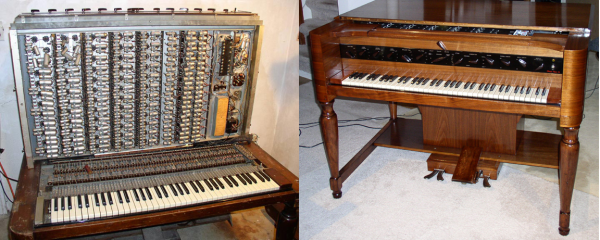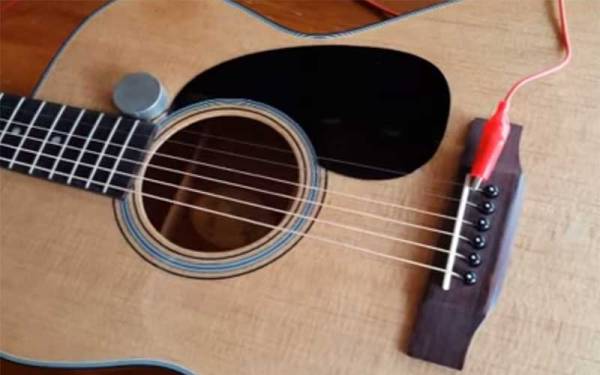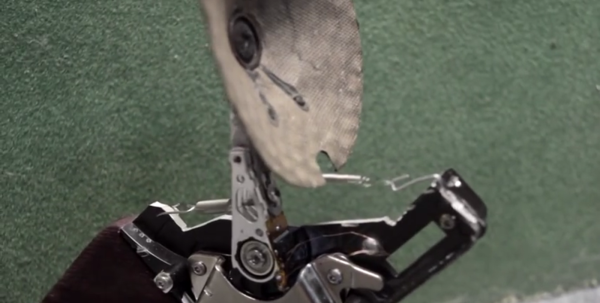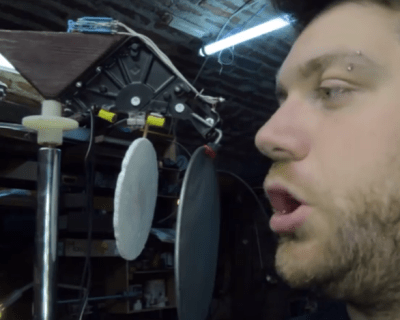Just when we thought we’d heard of all the cool early synthesizers, a tipster rattled our jar with news that someone completely restored a Novachord. These spinet piano-shaped prototypical synthesizers were made by Hammond for only four years. About a thousand of them were built before sales sagged and parts became scarce in 1942. It is estimated that only 200 or so are still around today.
The Novachord’s sounds are generated by a bank of twelve monostable vacuum tube oscillators. Each one is tuned to a pitch of the chromatic scale in what is called divide-down architecture. [Hammond] and his co-creators [John Hanert] and [C.N. Williams] used the property of dividing a frequency in half to generate the same tone, but one octave lower. This design means that all 72 notes can be played at the same time. Adjustable formant filters shape the often otherworldly sounds, which are then passed through flexible tube-based envelopes.
[Phil] knew it would be a big job to restore a Novachord in any condition. Thousands of passive components all had to be replaced. The cabinet bore all the hallmarks of a well-used parlor instrument—water rings from cocktails, scratches, and cigarette burns galore. [Phil] says that woodworking really isn’t his thing, but he did an outstanding job nonetheless of sanding every nook and cranny and applying several coats of stain. There are tons of drool-inducing pictures on his project site, and several clips of [Phil] really putting it through its paces.
Thanks for the tip, [Mike]!
Retrotechtacular is a weekly column featuring hacks, technology, and kitsch from ages of yore. Help keep it fresh by sending in your ideas for future installments.



 Attacking the outdated Cassette deck [kolonelkadat] knew that inside the maze of gears and leavers, most of it is moving around actuating switches to let the radio know that there is a tape inside and that it can switch to that input and play. Tricking the radio into thinking there is a tape inserted is handled by an Arduino. Using a logic analyzer [kolonelkadat] figured out what logic signals the original unit put out and replicating that in his Arduino code.
Attacking the outdated Cassette deck [kolonelkadat] knew that inside the maze of gears and leavers, most of it is moving around actuating switches to let the radio know that there is a tape inside and that it can switch to that input and play. Tricking the radio into thinking there is a tape inserted is handled by an Arduino. Using a logic analyzer [kolonelkadat] figured out what logic signals the original unit put out and replicating that in his Arduino code.



 The drive’s arm and voice coil actuator are the key parts of this project. It was modified with a metal extension so that a paper cone cut from an audio speaker could be attached, an idea used in
The drive’s arm and voice coil actuator are the key parts of this project. It was modified with a metal extension so that a paper cone cut from an audio speaker could be attached, an idea used in 










